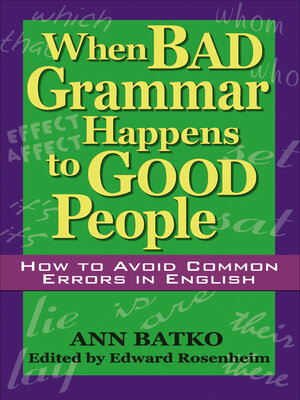
Sign up to save your library
With an OverDrive account, you can save your favorite libraries for at-a-glance information about availability. Find out more about OverDrive accounts.
Find this title in Libby, the library reading app by OverDrive.



Search for a digital library with this title
Title found at these libraries:
| Library Name | Distance |
|---|---|
| Loading... |
Discover an easy way to polish up your English with this guide to avoiding common mistakes people make when writing and speaking. Good news—you're definitely not the only person who struggles to keep "who" and "whom," "affect" and "effect," or "lay" and "lie" straight. Bad news: Frequent grammatical errors can affect (not effect) your success at work and in other areas of life. This comprehensive, easy-to-use reference is a program designed to help you identify and correct the most common errors in written and spoken English. After a short, simple review of some basic principles, When Bad Grammar Happens to Good People is organized by error type, such as Mangled Modifiers or Mixing up Words that Sound the Same. You choose how to work your way through, either sequentially or in the order most relevant to you. Each unit contains tests at the end to help you reinforce what you've learned. Best of all, the information is presented in a clear, lively, and conversational style—unlike your eighth-grade grammar textbook!







